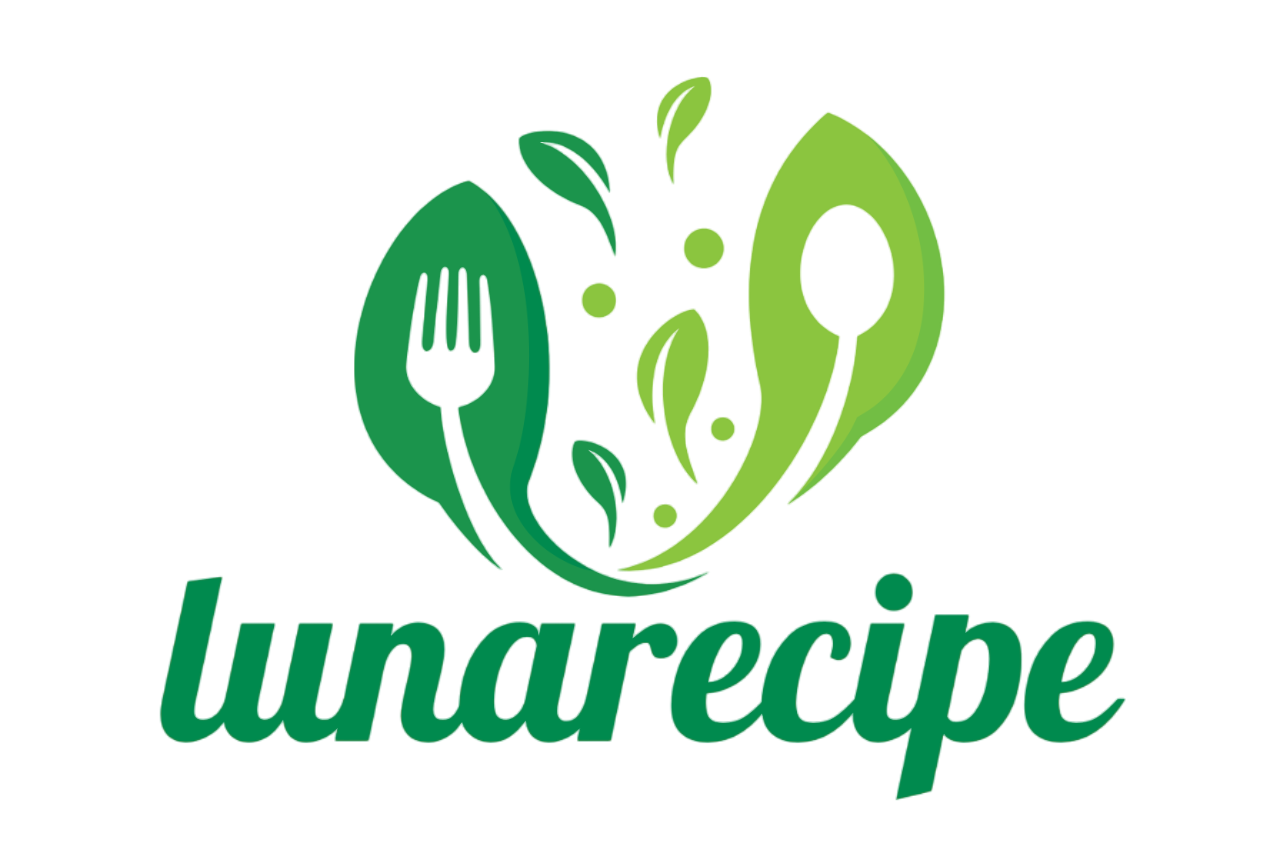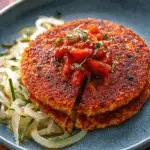The Fattoush Salad is a refreshing and vibrant Lebanese dish that perfectly balances textures and flavors. With crisp romaine lettuce, juicy tomatoes, cool cucumbers, and an herby lemon-sumac dressing, it’s the kind of salad that actually excites your taste buds.
But what really sets this version apart is the crunchy flatbread ribbons – oven-baked to perfection and sprinkled with sumac for a citrusy zing. They’re not just a topping; they’re the crown jewel of the dish. Whether served as a starter or a light main, Fattoush is ideal for warm weather meals and is a perfect entry point into the world of Middle Eastern cuisine.
Full Recipe:
Crunchy Flatbread Ribbons:
-
2 Lebanese or pita breads (or any flatbread)
-
Olive oil spray
-
1/2 tsp ground sumac
-
1/2 tsp salt
Salad:
-
2 cups romaine lettuce, chopped
-
1 small cucumber, diced
-
2 tomatoes, diced
-
1/2 red onion, finely sliced
-
1/2 cup chopped fresh parsley
-
1/4 cup fresh mint leaves
Dressing:
-
3 tbsp lemon juice (freshly squeezed)
-
3 tbsp extra virgin olive oil
-
1 garlic clove, minced
-
1 tsp ground sumac
-
Salt and pepper, to taste
Directions:
-
Make Flatbread Ribbons: Preheat oven to 350°F (180°C). Cut the flatbreads into long, thin strips. Spread on a baking tray, spray with olive oil, and sprinkle with sumac and salt. Bake for 10–12 minutes until golden and crisp. Let them cool.
-
Make Dressing: In a small bowl or jar, combine lemon juice, olive oil, minced garlic, sumac, salt, and pepper. Shake or whisk until well combined.
-
Assemble Salad: In a large bowl, combine romaine, cucumber, tomatoes, red onion, parsley, and mint.
-
Pour the dressing over the salad and toss gently.
-
Just before serving, scatter the crispy flatbread ribbons generously over the top.
Prep Time: 10 minutes | Cooking Time: 10 minutes | Total Time: 20 minutes
Kcal: 180 kcal | Servings: 4 servings
Introduction to Fattoush Salad
Fattoush is a quintessential Middle Eastern salad that exemplifies freshness, simplicity, and vibrancy in every bite. Known for its bright flavors and crisp textures, it hails from the Levant region and has become a staple across Lebanese, Syrian, Palestinian, and Jordanian cuisines. What sets Fattoush apart from other salads is its clever use of toasted or fried flatbread—usually pita—broken into shards or ribbons and tossed through a medley of vegetables, herbs, and a zippy dressing based on lemon juice, olive oil, and the deeply aromatic spice sumac.
This dish is more than just a salad—it’s a celebration of seasonal produce, ancient culinary traditions, and the art of turning simple pantry ingredients into something extraordinary. The word “Fattoush” is derived from the Arabic word “fatteh,” which means “crumbs,” reflecting the role that broken bread plays in the dish. Unlike traditional Western salads that might rely on cheese or croutons for texture, Fattoush uses bread as both a flavor component and a crunchy contrast, making it one of the most satisfying salads you can make.
A Cultural Staple with Historical Roots
The origins of Fattoush are believed to lie in the resourceful kitchens of Levantine farmers who would make use of leftover stale bread. Rather than wasting it, they would fry or toast the bread and toss it with whatever fresh vegetables and herbs were on hand. This practice led to the creation of a range of dishes under the “fatteh” umbrella—Fattoush being the salad variation.
In Levantine households, Fattoush is often served as part of a mezze spread—a collection of small plates shared by friends and family. It sits comfortably alongside hummus, baba ganoush, tabbouleh, and labneh, offering a bright counterpoint to the richer dips and stews that also populate the table. Its ability to both stand alone and enhance other dishes makes it beloved not just in its native lands but increasingly around the world.
Key Flavors and Ingredients
Though you requested not to include the specific list of ingredients, it’s important to understand the flavor profile that makes Fattoush so distinctive. The salad typically features a base of crisp lettuce or greens, with juicy tomatoes, refreshing cucumber, thinly sliced onion, and generous amounts of parsley and mint. These herbs are not mere garnishes—they are integral to the freshness of the dish.
But the real stars are the flatbread ribbons and sumac. The bread, usually pita, is sliced into thin strips and either baked or lightly fried until golden and crunchy. This adds a depth of texture that elevates the salad beyond the ordinary. Sumac, a dark red spice made from ground berries, contributes a tangy, lemony note that is both aromatic and slightly tart. It replaces the need for vinegar and provides a signature Middle Eastern character that’s hard to replicate with other ingredients.
The dressing is usually a simple but robust blend of lemon juice, olive oil, garlic, and sumac, with salt and pepper. It’s poured over the salad and tossed gently so that everything is well coated but the bread remains somewhat crisp until served.
A Perfect Balance of Texture and Taste
One of the defining features of Fattoush is its textural complexity. The vegetables provide a fresh crunch, the herbs offer leafy softness, the sumac dressing coats everything with zesty flavor, and the crispy flatbread ribbons add a satisfying bite. This interplay of textures is no accident—Middle Eastern cooking places a high value on combining ingredients in ways that awaken the palate.
Unlike salads that wilt quickly or become soggy, Fattoush is built to hold its structure. In fact, one of its charms is the way the bread slowly softens in the dressing, giving you multiple textures in one bowl—some bites are crunchy, others are tender and soaked with flavor. It’s a dish that evolves from the first bite to the last.
Nutritional Benefits
Fattoush is not only flavorful and satisfying, but it’s also incredibly healthy. It’s naturally plant-based and can easily be made vegan, depending on what type of flatbread you use. It’s rich in fiber from the vegetables and herbs, provides healthy fats from the olive oil, and delivers a good dose of antioxidants from ingredients like tomatoes, parsley, mint, and sumac.
Sumac, in particular, is a powerful spice with anti-inflammatory and antimicrobial properties. It has been used in traditional medicine for centuries and is now gaining popularity in the wellness community for its health benefits. The lemon juice and fresh garlic also contribute to the nutritional profile of the dressing, offering immune-boosting properties and aiding digestion.
Because it’s relatively low in calories but high in flavor and satiety, Fattoush is a great option for anyone looking to enjoy a hearty, guilt-free meal or side dish. It’s ideal for those following Mediterranean, vegan, or plant-based diets.
Versatility and Customization
One of the most delightful aspects of Fattoush is how easily it adapts to what you have on hand. While the classic version includes tomatoes, cucumbers, and herbs, you can easily incorporate other vegetables like radishes, bell peppers, or even roasted eggplant for a twist. The greens can range from romaine to spinach or arugula, depending on what’s in season or what you prefer.
The flatbread component is also versatile. While pita is traditional, you can experiment with lavash, naan, or even tortilla strips in a pinch. Toast them in the oven, pan-fry, or air fry them for different levels of crunch. The sumac can be adjusted to taste or swapped with a squeeze of extra lemon juice if unavailable.
You can even turn Fattoush into a more substantial meal by adding grilled chicken, falafel, or chickpeas. Its base flavor profile is so well balanced that it supports a wide variety of add-ons without losing its identity.
Presentation Tips
Fattoush isn’t just delicious—it’s also beautiful. The bright reds of the tomato, deep greens of the herbs, and golden browns of the flatbread ribbons create a dish that’s visually striking. For presentation, it’s best to toss everything together except the bread, and then top the salad with the crispy ribbons just before serving. This ensures the bread stays crunchy and gives the salad a dramatic, textured finish.
Serving the salad on a large flat platter instead of a deep bowl also helps showcase its visual appeal. Sprinkle extra sumac on top for a bold splash of color and flavor, and garnish with whole mint leaves for a touch of elegance.
Why You’ll Love It
Fattoush is one of those rare recipes that manages to feel both light and filling, familiar and exotic, quick and impressive. It’s a conversation starter at any gathering, a nutritious choice for meal prep, and a refreshing change from heavier meals in warmer weather. Whether you’re introducing it to someone for the first time or making it for the hundredth time, it always feels fresh and exciting.
Its ability to bring people together—around a mezze table, a picnic spread, or a casual family dinner—cements its place as more than just a salad. It’s a cultural ambassador, a crowd-pleaser, and a culinary treasure that deserves a permanent spot in your recipe rotation.
Conclusion
Fattoush Salad is more than a dish; it’s a culinary experience that embodies the best of Middle Eastern flavors—bold, fresh, and deeply satisfying. It captures the essence of resourceful, flavor-driven cooking by transforming humble ingredients like flatbread and herbs into something truly extraordinary. Easy to prepare, incredibly flexible, and visually stunning, Fattoush is the kind of recipe that not only nourishes the body but also delights the senses.
Whether you’re looking for a new salad to add to your repertoire or hoping to introduce your guests to authentic Middle Eastern fare, Fattoush is a perfect choice. It reflects a rich cultural history, promotes mindful and healthy eating, and most importantly, tastes absolutely incredible.
Let it be the star of your summer table or a vibrant companion to your favorite entrees—either way, Fattoush will never disappoint.






